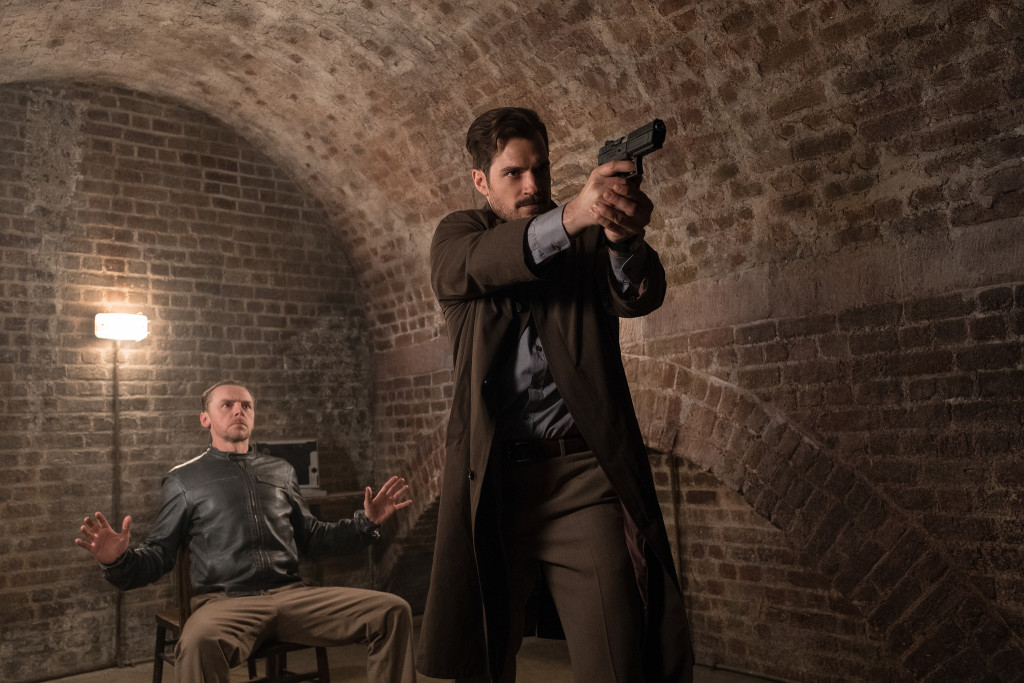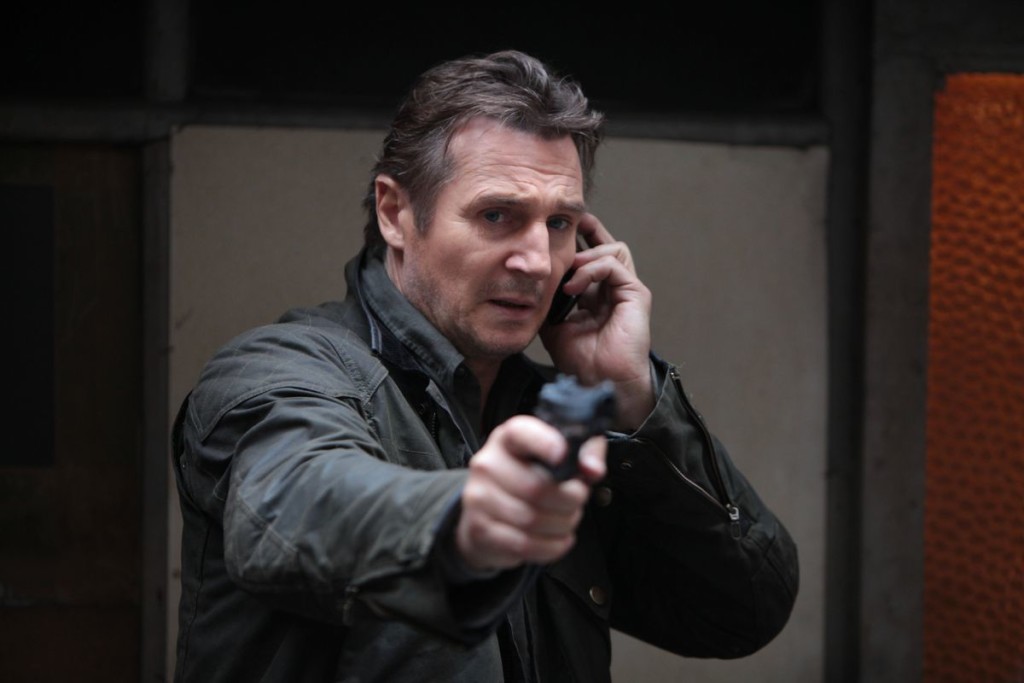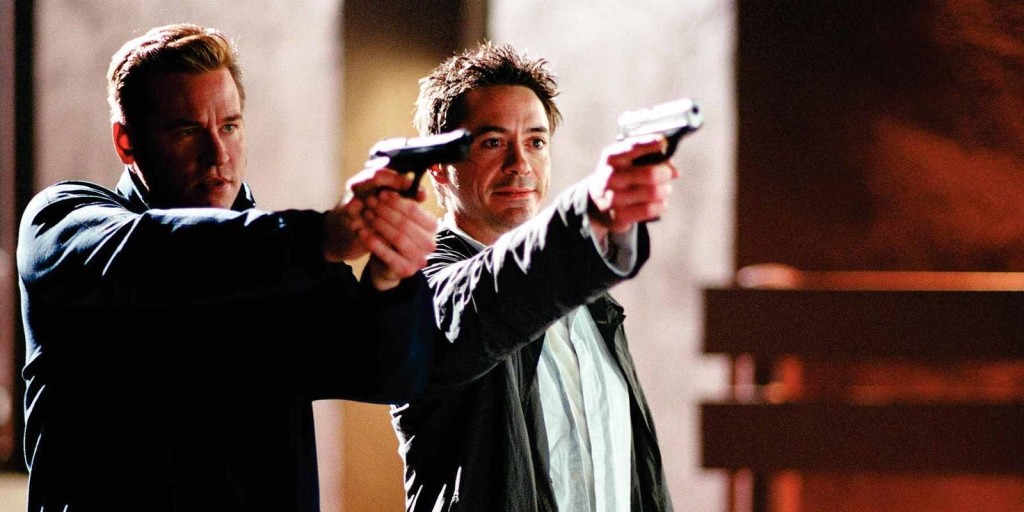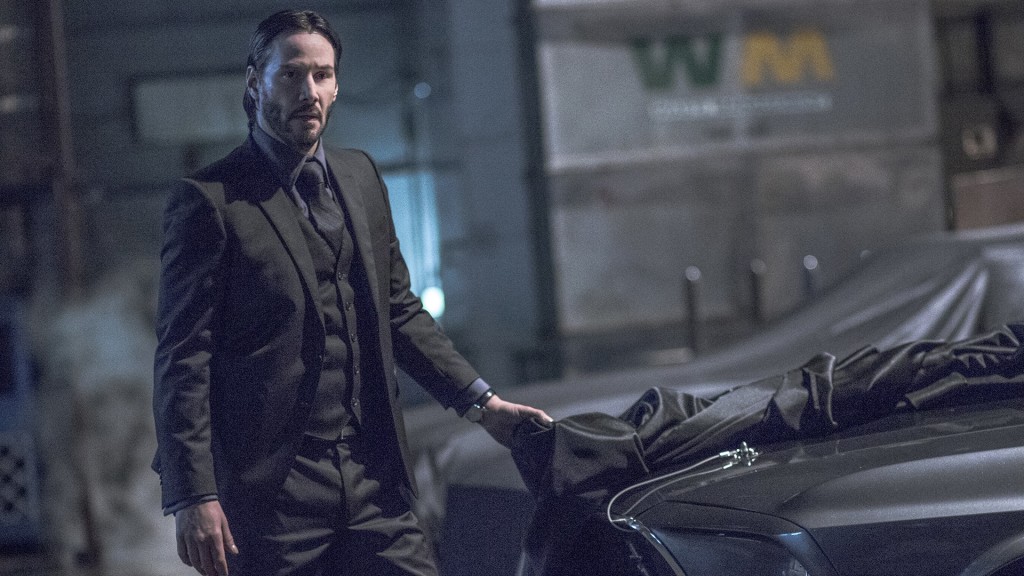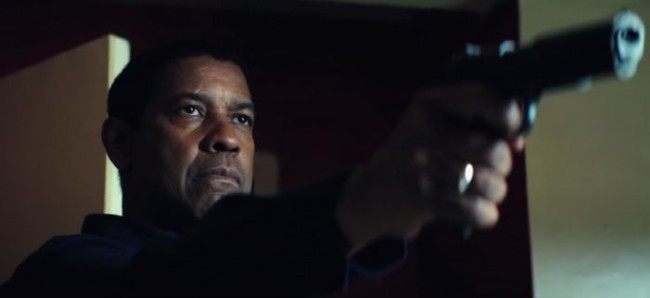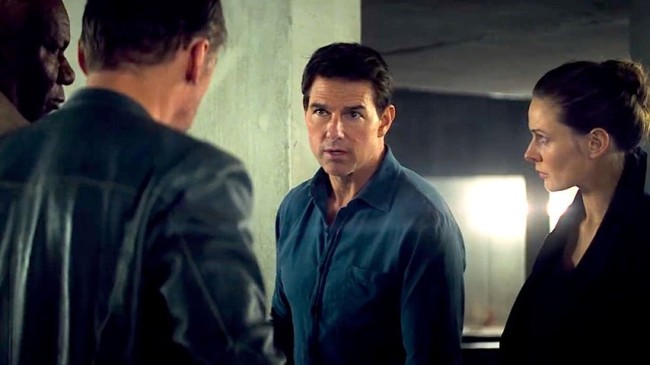Search Results for: James bond
Genre: Action
Premise: When a talented hacker is recruited by the mysterious Cicada 3301, she gets wrapped up in a plot that threatens to destroy the entire world. Based on the real organization.
About: This script finished number 4 on the 2019 Black List. The writer of the script, Lillian Yu, made last year’s Hit List with her script, Singles Day.
Writer: Lillian Yu
Details: 108 pages
One of the reasons it’s so hard to make hacker movies work is because there aren’t a lot of ways to make typing on a computer interesting. Even with the fancy graphics, it’s a bit like chronicling the life of a famous writer. The act of writing is boring to watch, just as the act of hacking is boring to watch. I found this out the hard way a long time ago when I wrote a hacker script. No matter how cool I tried to make the hacking process, it always came back to my hero sitting in front of a screen pounding buttons. I could never figure it out.
The more interesting approach is probably to have your hero be operating in the real world and your villain be the one who’s the hacker. That way, they’re controlling the elements around you and you have to constantly adjust. I think The Net, with Sandra Bullock, took this approach. Enemy of the State as well. And probably some recent movies that I’m forgetting. So how does Yu solve this problem? Let’s find out.
Jane is a computer genius, so much so that she got a full-ride to Harvard. Jane is also a bit of a social justice warrior, and when she tries to expose one of Harvard’s premiere fraternities for covering up sexual assault, she finds out that Harvard is more interested in keeping up its pristine image than being Ronan Farrow’s next expose. So Jane is kicked out of school.
She eventually gets a crappy job at an insurance company where she secretly retroactively adjusts policies so that poor people don’t get screwed over. This catches the eye of a secret organization known as Cicada who recruits Jane to be a member. She’s flown to Paris via a remotely controlled airplane, passes a bunch of a tests, then meets the team, which is basically a techno-savvy version of the Mission Impossible group.
The leader, Adam, explains that Cicada is an organization whose sole job is to do right in the world. For example, there’s a guy running a Ponzi scheme 10x worse than Madoff. Cicada digitally transfers all that money back to its rightful owners. All in the background.
The problem is there’s another organization called Zero whose mission is the same as Cicada’s. To save the world. Except their business plan has gone awry recently and their current plan is to infuse North Korea with trillions of dollars so it can launch a nuclear war against the world. All of this is happening at the end of the month, so they need to act now.
There’s a major gathering of the most influential people in the world at a castle and the head of Zero is going to be there. They need to get there and kill the guy. Unfortunately, hacking isn’t going to be enough to do the job. So Jane must go through action training to get her up to speed in hand to hand combat and shooting peeps in the face. She barely passes and off they go.
Everything at the castle goes cleanly at first, but then Jane runs into a Zero member, who informs her that Cicada is lying to her. That she was recruited specifically to be the fall guy when all of this hits the press. Unsure of who to believe, Jane must decide who to align herself with, the company who recruited her, or the apparent enemy.
One of the best ways to convey a script read is to take people inside the mind of the reader as they were reading. Which is what I’m going to do here. The first thing I noticed about this script was that the writing was strong. There was a vibrancy and energy to it that was exciting. The description, in particular, was a cut above what I usually see.
So I was excited. However, I then ran into my first issue with the script. The main character was really angry at the world. And angry main characters rarely work. It’s hard to root for them, plain and simple. Whenever you’re unsure of what you can get away with with your main character, just imagine them in real life. Do you like angry people in real life? I don’t. Most people don’t. So that’s probably not going to work as a main character. It can work with a side character since they don’t need our emotional investment. But it’s a major risk when you’re doing it with the hero.
I think Yu sensed this and, therefore, gave Jane a couple of save the cat moments. Her mom dies. And she helps a wronged insurance customer get their money back. This can sometimes work to balance the character out. But only if the implementation is invisible. I saw these moments for what they were – attempts to get us to like the character. Once we see the hand of the writer writing, we know we’re being manipulated.
Regarding the problem I brought up in the intro, Yu made the wise decision to train Jane in more than computer hacking. She’s taught how to kill and fight and drive which allows her to get into more interesting situations in the big set pieces. The issue there was that it wasn’t believable. She’s trained to be an action star in a week.
This is a common problem in these “ordinary hero thrust into extraordinary situation” movies and writers have developed all sorts of tricks to make the leap passable. For example, in the movie Wanted, didn’t James McAvoy’s character have a father who was special and therefore he’d inherited special abilities as well? He just needed someone to open them up?
To this day, the best movie that’s ever done this is The Matrix. It was instantly believable that a nobody who doesn’t know how to fight could fight like a master since when you’re in a computer system, any skill can be uploaded into you. It’s one of the many reasons that movie was a classic (Matrix 4 coming, baby!).
But the biggest problem with this script is that 75 pages into it, I stopped and thought to myself, “I know I’ve read this somewhere before.” I went into my archives, did some research, but eventually realized that, no, I hadn’t read it before. It was that the script’s beats were so familiar, it just FELT like something I’d read before. And that’s where I mentally gave up on the script.
A few of you have indicated I should add a “Is this produceable” section to my reviews since I’m moving into producing. It’s a great question with this script. Because it feels like a movie. But if I’m going to produce something, I’m looking for some element that’s unique enough to make the film stand out amongst the crowd. And I didn’t feel that here. This is very much Mission Impossible meets James Bond. A few years ago, the female lead might’ve helped it stand out. But now everyone’s writing female action leads.
Then again, who knows. John Wick was the most generic action movie plot ever. A retired assassin comes back to kill a bunch of bad Russians. And after the Action Showdown Contest, one of the conclusions we came to was that it’s really hard to make an original action movie. So I suppose the answer to this question is in the eye of the beholder. We’ll have to see what happens.
[ ] What the hell did I just read?
[x] wasn’t for me
[ ] worth the read
[ ] impressive
[ ] genius
What I learned: When writing hacking scenes, avoid a bunch of character + computer screen gobbledy-gook that sounds like hacking. Stuff like, “Did you close down the firewall?” “I’m still trying to find out if he’s using a password sniffer!” In my experience, that stuff never works. Instead, you need to create a situation – preferably something visual – that the reader can understand. Maybe this isn’t the best example, but in The Social Network, instead of Mark Zuckerberg writing some weird techy hacky program in real time, Sorkin had him competing against six other people in a circle of computers in the midst of a drinking contest. That’s always going to work better than literal lines of code.
A big complaint I had with yesterday’s script was that the character writing was too thin. The extent of the character work was that the main character was grieving the loss of their father. On the surface that sounds like a deep issue to explore. A family death is a tragic experience for most people. But that’s only if you actually explore it. If it’s something mentioned at the beginning of the script and then it never comes into play again, that’s not good character development. To be clear: If nothing “develops” then it’s not character “development.”
I received an interesting response in the comments section pointing out that in these quick thriller and action scripts, you don’t have time to develop characters. I’ve heard this argument quite a bit. And the people who use it actually go one step further. It’s not just that you don’t have time, they argue, but the audience isn’t interested in character development in movies like this. They just want to see volcanoes impale people. Or John Wick throw ninja stars at the bad guys. I understand what they’re saying because it’s partly true. People go to dramas to see character exploration. They go to action movies to see action.
But what they’re forgetting is that the degree to which your audience connects to your characters is the same degree to which they care during the action scenes. Have you ever watched the most amazing big budget action scene ever and yet been totally bored? Chances are, it’s because you felt nothing for the characters involved. Have you ever watched a garden variety action scene and been riveted? Chances are you felt a closeness to the characters akin to the way you feel around your best friends. The only difference between those two scenarios is character development. The writer is doing something with the characters that’s making you feel a greater connection to them.
So where did this “no country for character development in action” rumor begin? I suspect it comes from franchises like Mission Impossible, James Bond, and Fast and Furious. Because, yeah, there isn’t a lot of character development in those films. But that’s because those characters stopped changing a long time ago. These days they’re more like old friends who come around every once in awhile to catch up. This creates the false impression that, well, those characters aren’t changing, so mine don’t need to change either.
And they don’t. There’s no rule that says your character HAS TO DEVELOP. But if you want to create more of a connection between your audience and your story, character development is the bridge that’s going to take you there.
But what is character development? Why do people have such a tough time boiling it down? I don’t know and I don’t care. Because what I’m about to do is tell you the secret to great character development. Are you ready? Here it is: There are two stories going on. The story in your movie and the story in your character. In other words, your character IS A STORY UNTO HIMSELF. Once you internalize that, your character writing is going to increase a hundred-fold.
That’s because you’re not just trying to move your plot from point A to point Z. You’re moving the story within your character from point A to point Z as well. So let’s take a very simplistic view of this and use yesterday’s script as an example. The main character’s dad had recently died. That’s why our hero was going on this trip. Well, how do you build a story WITHIN THE CHARACTER about that? The most obvious way is that they haven’t been able to move past their father’s death yet. So point A is that they’re still consumed by the death of their father. Point Z, then, is that they’ve finally found peace with their father’s death. And there you go. That’s a character’s inner story right there.
Still confused? Go watch the Pixar movie, “Up,” where this exact same inner journey is explored. In that script, the writers explored the hero’s issue through his refusal to connect with others. He’s been so hurt by his wife’s death that he doesn’t let anyone else in. So what happens? A little kid keeps trying to get in and get in and get in, until our hero’s defenses finally break down. By accepting this new friend into his life, he has finally gotten over his wife’s passing. Was this harder to write then simply having an old guy and a kid go on an adventure together? Of course. Which is why most people write that version. But if you want to affect people, you have to write the version that has inner character stories as well. It will take you longer but I promise it will be worth it.
And the great thing about a character’s inner story is that it doesn’t have to be one thing. It can be about moving past something. It can be about a deep set flaw that’s holding someone back. It can be about one’s struggle with an addiction. As long as you explore it in an honest way and that there’s some level of CHANGE in the character (they go from point A to point Z by the end of the script) then you’re writing something better than the average bear.
But how do you find these things, Carson? What kind of inner struggles are going to work in a movie about running from killer robots or hunting down Russian gangsters who killed your cat? The universal kind. The kind all of us go through at various points in our lives. Start with yourself. What are the major flaws holding you back in life? Do you constantly doubt yourself and therefore never take chances? Are you afraid to get close to people so you put up a wall? Do you put your work over your family? If you can’t find anything in yourself that works for your hero, move to friends and family. It’s easier for us to see our friends’ flaws than it is our own. Does someone not stand up for themselves enough? Is someone too close-minded? Does someone spend all their time planning for the future as opposed to living in the present?
Once you understand what a person’s flaw is (Point A) you understand where you need to take them (Point Z). You just have to make sure you check in on the inner story throughout the outer story. If a character only thinks about the future, you’re going to add 7-8 scenes (think of these as “Check In Scenes”) throughout the script where they’re given opportunities to enjoy the present and argue with other characters about why their way is the right way. I’m making it sound easy even though it’s not. You have to do all of this in a way that’s seamlessly integrated into the plot. The conversations can’t be on the nose. They have to seem spontaneous and organic to the place and time. But I’m telling you, your script is going to be better for it. Think of it this way: When you include a character’s inner story, the audience is getting two stories for the price of one.
And I’ll finish this by reiterating something it took a long time to learn: Hollywood has a million people who can put together a plot. But there are only around 100 who can create compelling characters. Which is why those writers are the most coveted. Do with that info what you will! :)
Genre: Spy
Premise: When a U.S. physicist defects to North Korea carrying a mysterious suitcase, old school CIA agent Leo Diamond is tasked with helping some young CIA upstarts prevent another Snowden situation, or worse.
About: This script sold in 2014 for high six figures. It was written by Ken Nolan, who scripted Black Hawk Down and who was ripping off a number of big spec sales during the time. Nolan was reportedly obsessed with the book on which the script was based, pitching it to everyone in town. Nobody wanted anything to do with it. That is until he changed the setting from the Cold War to the present day, where it could be pitched as an “Edward Snowden” like spy story.
Writer: Ken Nolan (based on the novel by Robert Littell)
Details: 116 pages
Honestly, if I were a writer desperate to sell a script, I would type “spy novel” into the Amazon search bar and go down the list of books that come up. Find the lesser known books, the ones that have less than 200 reviews, and look for a concept you like. As soon as you find one, get in touch with the writer and ask for the rights to adapt the book. Doesn’t matter which direction the breeze is blowing in Hollywood, they ALWAYS buy spy scripts. Always always always. The trick is finding one with an electric main character that you can build a franchise around.
The Defection starts with a fat man discreetly following a skinny man through the streets of Hanoi, Vietnam. We get the impression that the fat man has been tasked with doing this for awhile and doesn’t believe the skinny man is worth the trouble. Either that or he’s looking for an excuse not to have to run around the city so much. That lazy attitude ends up costing our blubbery buffoon, as the skinny guy disappears, and is found on CIA security cameras 48 hours later walking into the North Korean Embassy with a large suitcase.
We learn that the man’s name is A.J. Lewinter, a respected but introverted American physicist and computer hacker. It is the CIA’s belief that Lewinter is going to the North Koreans to sell them something, possibly information about the U.S.’s nuclear missile program. Young buck CIA agents Billings and Ferri see this as an opportunity to make a name for themselves, revving up their millennial mind muscles to take this dude down. But their boss, Winton, has other ideas. He wants them to team up with 50-something dinosaur agent Leo Diamond. Winton believes that Diamond’s boots-to-the-ground old school approach is the key to figuring out what this dude is up to.
Ferri and Billings scoff but what can they do? Diamond struts in and nails the younglings with a forced monologue about the importance of high quality coffee in the CIA. As soon as the CIA coffee budget goes down, he tells them, the whole system falls with it. Naturally, Ferri and Billings think Diamond is nuts. But he’s only getting started. While Ferri and Billings think the key to the case is finding out what’s inside the suitcase, Diamond’s more interested in what’s going on in Lewinter’s head.
While Ferri and Billings use Google for the bulk of their research, Diamond heads out to talk to the people Lewinter knew, a co-worker at MIT as well as a couple of secret girlfriends he had on the side. They all seem to agree on one thing – Lewinter has a strict moral code. Which doesn’t jive with this North Korean defection at all. The deeper our agents dig, the more information they find on Lewinter. He’s not your average physicist. This is a guy who knows how the U.S. Defense’s missile array works. How the power grids in America operate. This is a man who, theoretically, could turn the entire United States off then blow it up. Which means they must act fast and stop Lewinter!
This is a cool little script.
When I read that it was a spy movie, I assumed it would be your typical James Bond knockoff. A fiercely intelligent effortlessly charming hero running around the world in search of his next set piece. But this story is actually more contained and realistic. Our heroes aren’t baking fake face masks to trick stuffy tuxedoed men with thick Eastern European accents. They’re in boring offices a million miles away from the problem, and time is running out for them to figure out who their traitor is and what he plans to do. It reminded me of that great little British drone movie from a couple of years ago, Eye in the Sky.
With spy movies, I’m always telling writers, “What makes your spy movie different?” You should ask this question of every genre, of course. But especially this one because it’s such a formulaic genre. There’s nothing more boring than a generic spy movie. So setting this up as a contained CIA thriller and making it a 24 hour mystery where the entire world is at stake was a welcome diversion from the snore-worthy Ethan Hunt clones I’m used to reading (how many times can one man blindly ride his motorcycle 100 miles an hour through an 8 lane intersection and not get hit????).
My biggest issue with the script was that despite the perfect movie character name, Leo Diamond wasn’t that distinctive as a character. For example, we’re told that he’s old school. That’s the whole reason they bring him in. But one of the first things he does is call on the local police to jump into their computer archives and retroactively give Lewinter a lengthy criminal record. That seems a lot more like a new school move to me.
Also, you want to make an impression with your hero’s entrance. Especially in a genre like this where we’re meant to believe that this guy is special. Charging in with a big long fun monologue is a perfectly acceptable way to achieve this. But if the monologue bombs, the character never recovers. We will always see him as the guy who spewed out that try-hard nonsensical rant about CIA coffee. I’m serious, guys. The stuff your hero does in their first few scenes is pivotal in winning over the reader.
I didn’t love 2012’s Jack Reacher but it had a great character intro. We see the entire FBI desperately trying to find Jack Reacher. It’s impossible, they’re told. Jack Reacher is one of the most skilled and hard-to-locate people in the world. As they chart out the effort and manpower and number of days it will take to find this man… Jack Reacher just walks through the door and says hi. No big silly monologue. Just one simple cleverly-executed action and we love this guy.
Luckily, the script overcomes this hiccup. The setup is too fun not to work. In addition to what I’ve mentioned, The Defection uses one of the more entertaining tropes in the genre – which is to either take a new school problem and inject an old school character into it, or take an old school problem and inject a new school character into it. The reason this works is CONTRAST. Contrast = conflict = drama = entertainment.
If you even casually like the spy genre, you’ll like this script.
[ ] What the hell did I just read?
[ ] wasn’t for me
[x] worth the read
[ ] impressive
[ ] genius
What I learned: If your script isn’t working, try playing with the setting. For example, if your script is set in 2019 and it feels dead, ask what it might look like if it were set in 1969. Or 1929. Or 1984. Everything about this idea seemed boring to Hollywood when Nolan was selling it as a Cold War story. By shifting the setting to modern day, it all of a sudden came alive.
A hot topic after yesterday’s review was how the script was driven by “ex special forces” characters. I read a variety of comments that said something akin to, “Whenever I see “ex” anything in the logline, I’m out.” The consensus was that this was a lazy cliche writing choice that demonstrated an utter lack of imagination. To this I say, “I feel ya.” You can probably find some early reviews on the site with me railing against this very issue. But in time, I’ve come to change my mind. And I want to explain why.
The number one reason you want to use an ex-special forces, or ex-detective, or even active versions of these characters in your screenplay, is that it makes your script a hundred times more marketable. There is no genre Hollywood knows how to market better than “guy with a gun.”
I’ll never forget when this clicked for me. I was reading an interview with Joel Silver, who had talked to Robert Downey Jr., and Downey Jr. was lamenting the fact that he couldn’t break into the larger blockbuster scene. Silver said, as if obviously, “Well yeah, it’s because you’ve never had a gun in your hand in a movie.” In the next movie (“Kiss Kiss Bang Bang”), Downey Jr. strapped up, and it wouldn’t be long before he became one of the biggest movie stars in the world.
You could make the same case for Liam Neeson. Neeson has had a great career. But he didn’t become a household name until his ex special forces character with a particular set of skills, Bryan Mills, flew to France to save his daughter.
I can already hear you saying, “But isn’t it much more original and interesting if the hero DOESN’T possess a particular set of skills?” Not only does he become a bigger underdog, but if he’s not proficient with a gun, he has to use his wits and creativity to get out of situations. That’s so much more interesting than “bam bam, you’re dead.”
There’s some truth to this statement but here’s the thing. You’re limited in how extreme of a situation you can place a character in if they don’t possess the skills to survive that situation. Take John Wick. If John Wick is just a normal guy, he’s dead by the 20 minute mark. You can’t go up against a trained Russian syndicate if you’re a nobody who’s never pulled a trigger before. Any version of that story that has our untrained hero defeating the Russian syndicate is a bold-faced manipulation. And that’s the real issue here. The less skilled your hero is, the less skilled the opposition must be for it to be believable, and, by association, the smaller and less marketable your movie becomes.
The exemption to this rule is the “run away” narrative. You used to see this a lot in conspiracy thrillers like Enemy of the State. Because the “normal everyday guy” didn’t have the skills to go toe-to-toe with his government trained pursuers, he would run away. And the whole movie, then, would become running. As exciting as some of these films have been, a situation where a character runs away is never as compelling as a situation where a character stands his ground. And you can’t stand your ground if you don’t know how. Remember, guys, you’re going up against SUPER HEROES these days. The coolest and most badass characters cinema has ever seen. The ONLY type of character who can compete against this at the box office is a REAL LIFE SUPERHERO – James Bond and Ethan Hunt and ex special forces dudes such as our heroes in Triple Frontier.
So the question you should be asking isn’t, “How can I have my plumber protagonist believably defeat the Chinese mafia?” It should be, “How can I make an age-old character trope interesting, different, fresh, or all of the above?”
Levres offered up the first answer to this, which is that you can camouflage the cliche-ness of your hero’s background if you place them in a fresh situation. In other words, if you place a bunch of ex navy seals on a mission in Iraq to kill a terrorist, we’re not going to be excited about that. It’s too familiar. But a bunch of ex navy seals being forced to save a high-profile politician who’s been taken hostage with his family by a terrorist inside Disney World? That feels different. It’s a key reason why Triple Frontier worked. The unique locale helped offset the ex-special forces cliche.
But the secret sauce in winning this war is in the character construction. If you write a good character, it doesn’t matter what job they have. It doesn’t matter if they’re the most cliche archetype there is. If you can make them likable, if you can make them relatable, if you can provide them with depth, if you can give them personality, if you can give them a flaw they’re battling, we’re not going to be thinking about their jobs. We’re going to be thinking about them.
So if you’re one of these writers who’s writing an ex-Navy SEAL, your first order of business is to construct a character we like, and look for ways to make them different. Because what critics are really saying when they say, “I hate ex-Special Forces characters,” is “I hate generic ex-Special Forces characters.” One of the best scripts I’ve ever read, The Equalizer, had ex-agent Robert McCall helping an overweight co-worker eat properly so he could pass a fitness test in order to make security guard. Later, we find McCall reading The Old Man and the Sea (he’s attempting to read all 50 books from the “The 50 Books You Must Read Before You Die” list) in a diner. This guy’s a little different. This ensures that we don’t think about the cliche nature of his former job.
Finally, if you’re writing “cliche” main characters like ex-NAVY SEALS, take some chances with your narrative. The idea here is if you’re going to play it safe in one area, you need to take chances in other areas. Because you can’t completely avoid cliche in a movie. It’s impossible. But you can minimize it. I brought this up with Triple Frontier yesterday. I loved how after they rob the house, the final 50 pages cover the logistical nightmare of trying to transfer 600 million dollars out of Paraguay. I’d never seen that before. If you can make narrative choices that give us things we’ve never seen before, they’re going to cancel out the things we have.
Now I’m not saying there’s no way to write a movie where an average guy defeats an organization of trained men. The Matrix figured out a way to do it. But if you can’t find that elusive Matrix-like idea, it’s still possible to write a good movie with cliche FBI agents or cliche ex-special forces agents. Just put them in a new situation, give us characters we care about, and take some chances with the narrative. You’ll be good. :)
Genre: Action
Premise: (from IMDB) Ethan Hunt and his IMF team, along with some familiar allies, race against time after a mission gone wrong.
About: Mission Impossible Fallout is, I believe, the sixth film in the franchise (don’t quote me on that). Christopher McQuarrie, who directed the previous installment, is back in the writer-director chair again. The film scored 61 million at the domestic box office, which is the 9th best opening this year. Not great but Mission Impossible always does well globally and this iteration did especially well with the critics, scoring a 97% on Rotten Tomatoes.
Writer: Christopher McQuarrie (based on the TV series by Bruce Geller)
Details: 150 minutes
Let me start by saying there is no movie I enjoy going to more than a Mission Impossible movie. Why? Because on the way there, you get to hum… “duh duh duhduh duh duh duhduh dadadaaaaaaa dadadaaaaa DUH DUH DUH-DUH DUH DUH DUH-DUH.”
There’s no score you can hum that makes you happier. Try it. I’m serious. Start humming the Mission Impossible theme. Try not to feel happy. It’s impossible, right? Mission impossible!
So everyone’s saying this is the best Mission Impossible ever made. It’s a game-changer. It’s the “Dark Knight” of the series. Before we get into all that, let me tell you what I like about the Mission Impossible franchise. I like Tom Cruise doing his own stunts. I like the silly mask stuff. I like the interplay between the team. I like the gadgety stuff. For example, I like that scene from Mission Impossible 4(?) where they’re sneaking down a hallway with a fake projection empty hallway.
Surprisingly, the thing I like least about Mission Impossible is the action set pieces. I’ll get to why in a second. But first let’s break down the plot. Or at least try to.
Ethan Hunt’s mission, which he chose to accept, is to find three portable nuclear bombs before they can be detonated. He goes to British Lady Gaga to buy the bombs, only to find out that she’s not selling. She’s exchanging. She first needs Ethan to recover a mangy-bearded guy in police custody who I think was the villain from the last movie.
Ethan gets his team together and successfully extracts Mangy Beard, who we find out is working for a mysterious guy named John Lark who nobody’s ever met. Accompanied by new team member, Henry Cavill (Superman), the team prepares to exchange Mangy for the nukes. But the CIA, who think Hunt is a bad guy now for some reason, put an end to this rogue mission, which results in a shootout and Mangy Beard escaping.
It is believed that Mangy Beard, the mysterious John Lark, and these nukes, will be detonated at a remote smallpox lab in Kashmir. The resulting explosion will spread smallpox to the highly populated surrounding countries of China, India, and Pakistan, and basically end the world. Ethan Hunt needs to get there in time to stop it all. But can he???
I don’t know why it’s mission impossible for me connect with these big action spy movies. I really want to. I walk into each one hoping, praying, this will be the day. But it never happens.
Upon reflection, I think I need a STRANGE ATTRACTOR to my popcorn movies. I need Godzilla. I need Jedi. I need a clown that eats children. Straight up realism doesn’t work for me. It feels too basic, too standard. That’s the lens I’m viewing Mission Impossible and James Bond and The Bourne Franchise through. It’s a bunch of run-of-the-mill (albeit well produced) action scenes wrapped inside an overly complicated plot that I can never keep up with.
That’s correct. Yet again, I have no idea what’s going on. And in this iteration, my confusion started early.
We get a scene where Ethan Hunt and his team go to buy the nukes from the bad guys. Before the purchase can be completed, someone starts shooting from the shadows, killing all the bad guys but no one in Ethan’s crew. At the end of the scene, there’s a standoff where one of the shooters is holding Ving Rhames hostage. Ethan kills the man, runs over, and after everyone confirms that Ving Rhames is okay, they look behind them and realize that the nukes are gone.
Wait a minute wait a minute wait a minute. Who stole the nukes? Was it one of the surviving members of the group that brought the nukes? Or was it a third party? If it was a third party, why did they only kill the bad guys? You are literally leaving the most capable person on the planet, the person most likely to be able to track you down and kill you, Ethan Hunt, alive. That makes zero sense.
But the biggest fault of the plotting by far is when the CIA thinks Ethan Hunt is John Lark. I mean come on. Really? This guy who’s been saving the world for the last 20 years, the CIA all of a sudden thinks he’s a bad guy? There’s no way that would happen. It’s such a forced false plot point, it borders on embarrassing.
And then there’s those action set pieces.
Actually, before we get to that, let’s talk about Ethan’s super-power. When, exactly, did Ethan Hunt develop a power that allows him to speed through any intersection at 100 miles an hour and always be able to time it so that he never gets hit by six lanes of cross-traffic?
I get it if this happens once. You look back. “Phew. That was lucky.” But he does it over and over again. The reason this is relevant is because the whole trick with creating great chase scenes is to milk whether the hero will get caught. If your hero has a cheat code where he can zip through six lanes of cross traffic whenever he wants to ditch his pursuers, we know the movie will always save him whenever he gets into any real trouble. There’s zero sense of doubt.
Writers are supposed to do the opposite of this. You want to make things HARD for your hero, not easy. Remember what the Coen Brothers do. They write their hero into an impossible corner, then hand it to the other brother, who has to figure a way to get the hero out of it.
Back to the action scenes. And here’s where the lack of a strange attractor affects my viewing experience most. I’ve seen 95% of the these action set pieces before. Wasn’t there a big motorcycle chase in the last movie? Weren’t motorcycle chases a big part of Mission Impossible 2? Sure, there were some fun moments like Tom Cruise riding the wrong way around the Arc De Triumph. But the problem with real-world action is that it’s… well, real world. Everything real-world we’ve seen before. On the flip side, I haven’t seen a talking raccoon standing on top of a Tree-Man shooting a machine gun. That’s why I go to the movies. To see stuff I haven’t seen before.
The Mission Impossible action set-piece that sticks out most occurs in JJ Abrams MI (no surprise there). It takes place on an isolated stretch of ocean highway with Tom Cruise running from a drone that’s shooting missiles at him. There’s actually some inventiveness to this sequence. We’re isolated. We’re in a unique setting. We’re trapped. The odds are insurmountable (man with nowhere to run vs. military drone). In Christopher McQuarrie’s Mission Impossible movies, it’s always a chase through a city that we’ve seen a million times before.
Mission Impossible needs to get back to its roots. What’s the defining image of this franchise? When I say “Mission Impossible,” what is the first thing you think of? It’s Tom Cruise, clad in black, arms and legs spread eagle, being held one inch from a white floor. Six movies later and that’s still the image we go back to. Why? Because back then, it was more about being clever than, “WHAT COOL STUNT CAN WE DO HERE!?” It was more about coming up with a cool fun plot than, “I WONDER IF TOM CRUISE CAN JUMP OFF THE EIFEL TOWER ON A SEGWAY.” That white room heist sequence cost 1/100th of one of these car chases yet it was a hundred times more impactful.
Unfortunately, Mission Impossible continues to fall short for me. It’s not as realistic as James Bond. It’s not as fun as Fast and Furious. It’s basically a playground for Tom Cruise to do a real world stunt they can build a marketing campaign around. I was bored.
[ ] What the hell did I just watch?
[x] wasn’t for me
[ ] worth the price of admission
[ ] impressive
[ ] genius
What I learned: Major plot points must pass the eye test. While I liked that they tried to do something different with the climax – blowing up a nuclear bomb near a small pox lab so the small pox would spread to surrounding countries – it doesn’t work because it doesn’t pass the eye test. The eye test is what the audience sees. We see a desolate snowy mountain in the middle of nowhere. No matter how destructive you sell us on this situation, if we can’t SEE how this would kill millions of people, we’re not buying it. I didn’t once buy that this was going to affect anyone in China or India or Pakistan. Those nations felt a million miles away from me in these mountains. This is a common writer-director mistake. They liked this location as a set piece so much that they back-engineered the plot to get it into the movie, as opposed to allowing the climax to evolve organically from the story.
NOTE: It looks like Disqus stopped allowing comments on this thread at 4:00pm PT. No idea why. Probably just another dumb Disqus glitch. Just wanted everyone to know that I’m not deleting any comments.



